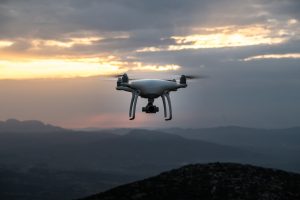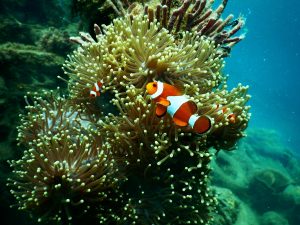How 3D Printing is Helping Wildlife Conservation
In recent years, a number of animals have gone extinct. Making matters worse, an increasing number are on the verge of extinction or their survival is threatened. There are a number of reasons that this is happening; chief among them, however, is the loss of habitat, pollution, and poaching.
The internet has been a very valuable tool in reporting how significant these issues are, which has resulted in a number of creative initiatives to aide in wildlife conservation. One futuristic technology that is making significant headway towards reversing the toll on wildlife is 3D printing.
How Can 3D Printing Help Wildlife?
3D printing has found numerous applications in business and manufacturing, but it may come as a surprise to some that it can be used to help wildlife. The technology’s speed and customization make it ideal for conservation work. 3D printing is easily integrated with other technologies, and the variety of different materials available make it perfectly suited to conservation efforts for a number of different species.
Bees
The importance of honey bees to our ecosystem cannot be understated. They are the principal pollinators of the majority of our food sources. If these bees were to go extinct, the world would face an immense food crisis, because 75% of the world’s agricultural plants are pollinated by honey bees.
Unfortunately, the honey bee population is suffering. Colonies are dying off at startling rates, and there is currently no definitive solution to this serious problem. 3D printing, however, may offer a solution to one of the bee’s roadblocks; safe pollination.
Michael Candy has created a synthetic pollinizer utilizing 3D printed flowers that offer bees a safe place to collect pollen and nectar. The device provides bees with the nourishment they require without exposing them to pesticides (a major issue for hives).
Coral
Coral reefs provide habitat and shelter for hundreds of different aquatic species. Like honey bees, these valuable organisms are suffering sharp declines in their population. This is due, primarily, to ocean pollution and a rise in water temperature and acidity.
The 3D printing solution for coral is to create new artificial reefs. These artificial reefs are constructed of lime or sandstone, and mimic true natural reefs. The goal of these structures is to attract free-floating coral polyps. These coral polyps, once attached to the stone, can then grow into full-fledged colonies, eventually creating a new living reef.
Tortoises
Full-grown tortoises are protected by large, durable shells. Infant tortoises, on the other hand, are not. While they still possess a shell, it is not nearly as strong or durable as an adult’s. Due to predation and loss of habitat, there are a number of tortoises that are endangered. A company called Hardshell Labs is working to protect the population of tortoises in the California desert by printing decoys of the infant tortoises.
The young tortoise’s top predators are ravens, which can easily peck through their shells. Hardshell Labs hopes to use their decoys to reduce predation by these ravens. The company hopes to do so by filling the decoys with a deterrent that might make the birds reconsider attacking another shell.
Rhinoceroses
 One animal’s plight that has only grown more sever in recent years is the rhinoceros. Rhinos are being killed in staggering numbers by poachers for their horn to be sold in China and Vietnam. Rhino horn is currently one of the most valuable materials on Earth by weight; because of this, poachers in Africa operate in well-armed and organized groups. Traditional methods of combating these poachers have been relatively ineffective so conservationists are turning to more advanced technologies; drones and 3D printing.
One animal’s plight that has only grown more sever in recent years is the rhinoceros. Rhinos are being killed in staggering numbers by poachers for their horn to be sold in China and Vietnam. Rhino horn is currently one of the most valuable materials on Earth by weight; because of this, poachers in Africa operate in well-armed and organized groups. Traditional methods of combating these poachers have been relatively ineffective so conservationists are turning to more advanced technologies; drones and 3D printing.
The Wildlife Conservation Unmanned Aerial Vehicle Challenge (wcUAVc) was an initiative to prevent poaching through the use of drones. Drones can navigate national parks much more effectively than rangers on the ground. Conservationists are using 3D printing to quickly and efficiently create drones. These drones can find and monitor poachers, which allows rangers to prepare and take action to protect the animals.
Conclusion
3D printing has a myriad of different uses, and the technology is only continuing to develop and advance. It is becoming more and more apparent, however, that the technology has a definitive place in conservation efforts around the globe. The new problems that conservationists face force innovative solutions, and 3D printing is leading the charge.
Subscribe to Our Email Newsletter
Stay up-to-date on all the latest news from the 3D printing industry and receive information and offers from third party vendors.
Print Services
You May Also Like
RAPID 2025: Stratasys & trinckle Announce Strategic Software Partnership
News continues to flood in from last week’s RAPID+TCT 2025, including a new partnership between AM market leader Stratasys and Berlin-based software company trinckle. By automating important steps in fixture...
RAPID TCT 2025: Spring in the Paris of the Midwest
I’m going to go out on a limb here and say that whomever coined the phrase Detroit: Paris of the Midwest, had not spent a lot of time in Paris...
3D Printing Financials: 3D Systems Looks to Bounce Back in 2025
After a challenging year for the industry, 3D Systems (NYSE: DDD) ended 2024 with results pointing to a reset, laying the groundwork for future profitability. The company didn’t post strong...
Printing Money Episode 27: Q4 2024 Public 3D Printing Earnings Review with Troy Jensen, Cantor Fitzgerald
Q2 2025 has already begun, but public markets reporting has only just finished with Q4 2024. To tie a bow on Q4 2024, we are thankful to have Troy Jensen...


 Photo by
Photo by 























